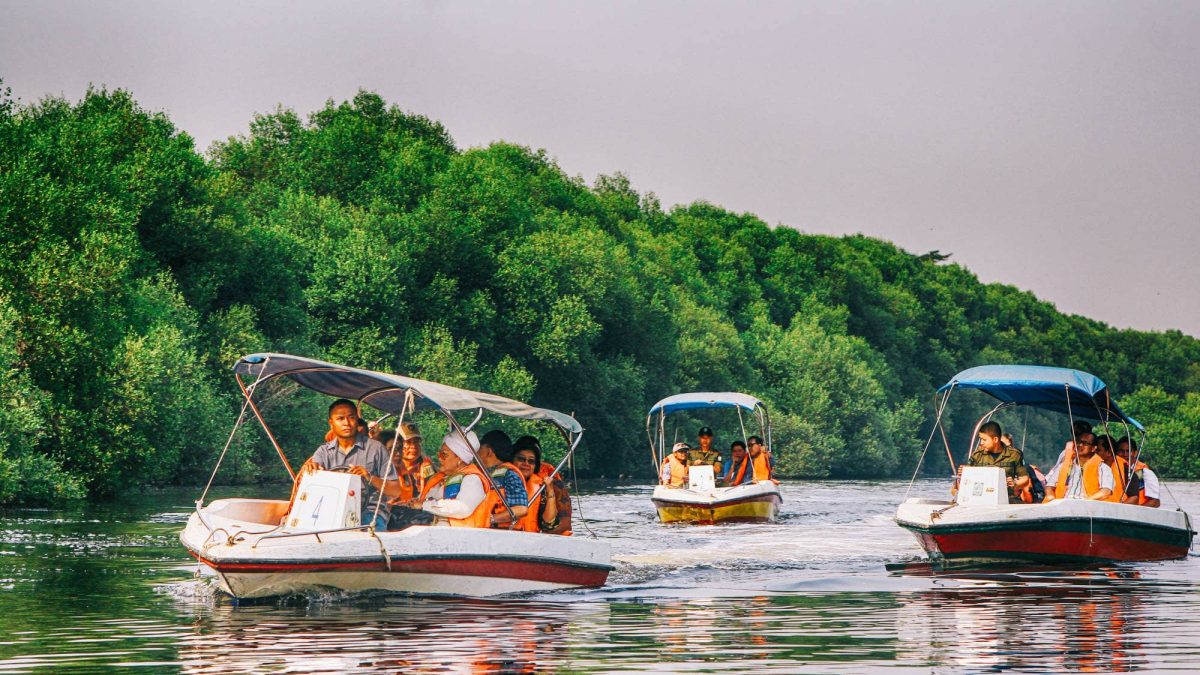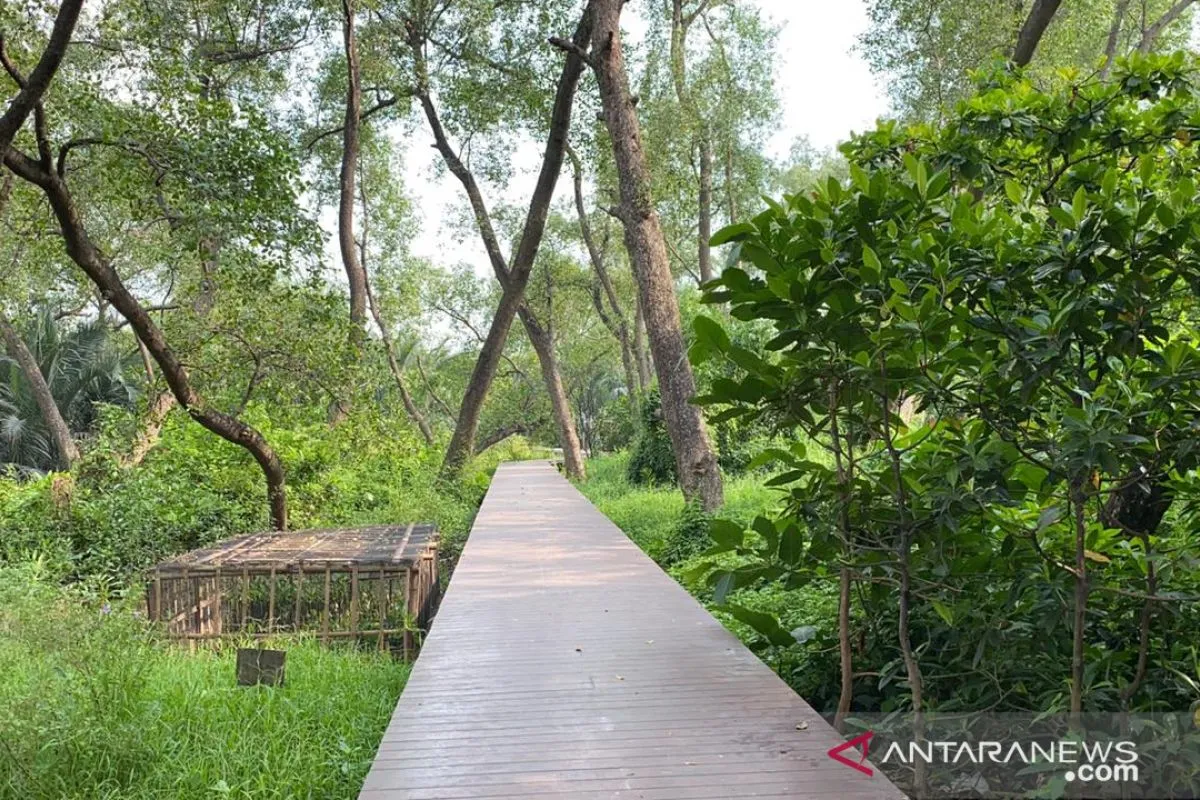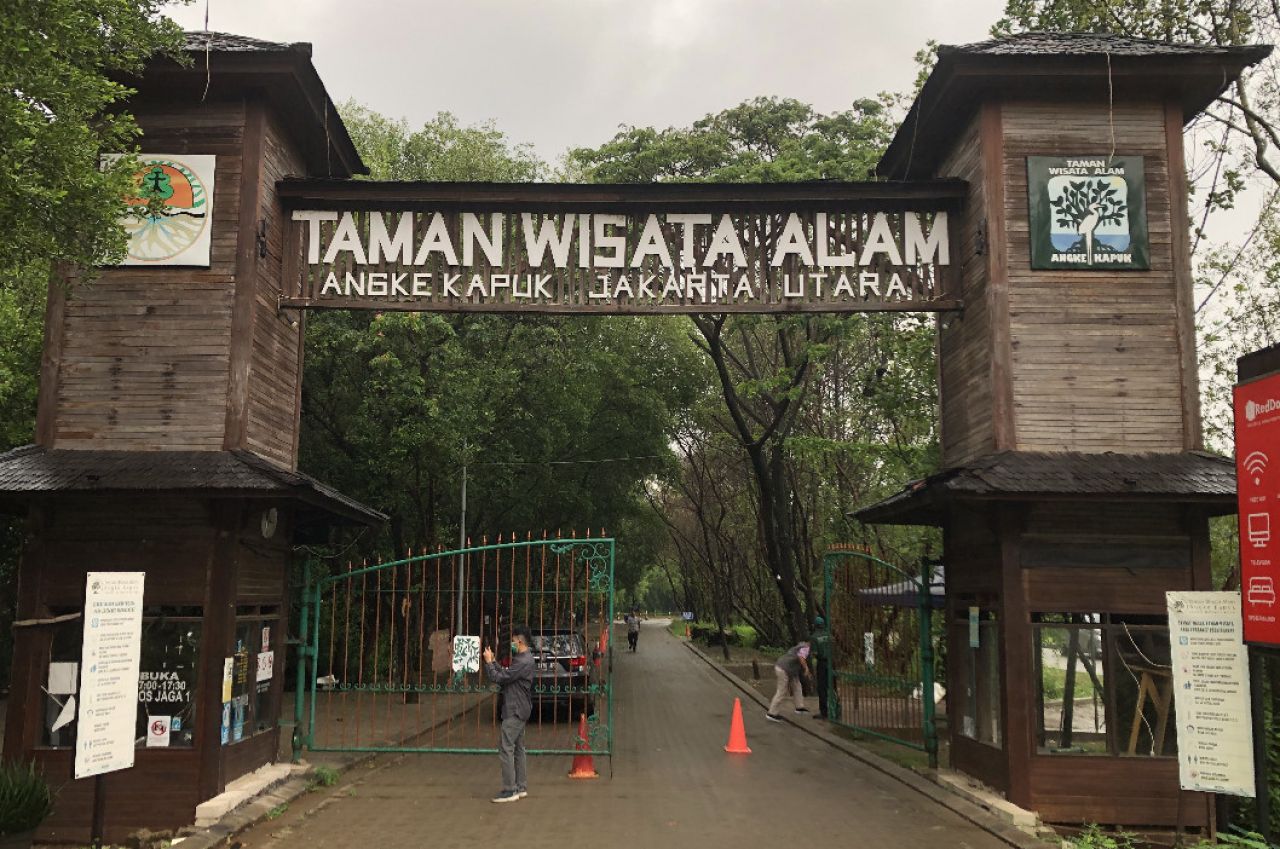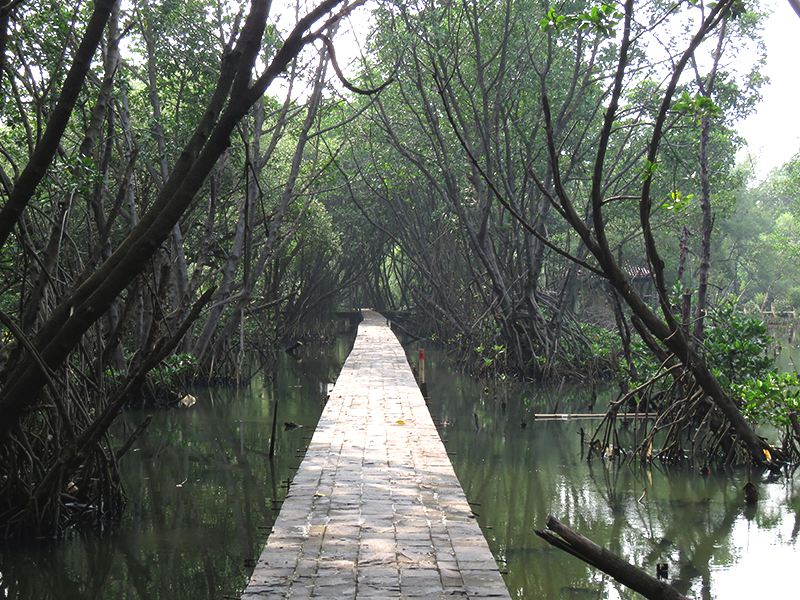Mangrove Ecosystem in DKI Jakarta: The Threatened Existence and the Importance of Conservation

Photo Credit : Taman Wisata Alam Angke Kapuk)
Mangroves, known for their unique ability to thrive in coastal and brackish waters, play a crucial role in maintaining the balance of coastal ecosystems. In DKI Jakarta, the extent of mangrove forests has significantly declined. Despite their potential to support biodiversity, protect coastlines, and sustain coastal communities, Jakarta’s mangrove ecosystems are increasingly threatened by human activities and climate change.
The Presence of Mangroves in Jakarta
As Indonesia’s capital, Jakarta still retains some mangrove ecosystems, though their coverage has drastically decreased over the past few decades. Mangroves can be found in several northern coastal areas, including Muara Angke, Pantai Indah Kapuk (PIK), and Marunda.
These ecosystems serve as natural barriers against coastal erosion and provide critical habitats for fish, birds, and invertebrates essential to marine life. Additionally, mangroves play a key role in carbon sequestration, offering a natural solution for mitigating climate change.
However, despite their importance, Jakarta’s mangroves continue to decline due to coastal development, land reclamation, pollution, and land conversion for housing and industrial purposes.
Key Mangrove Protection Areas in Jakarta
To counteract these threats, Jakarta has designated several protected areas for mangrove conservation. These legally protected zones are vital for preserving the city’s remaining mangrove ecosystems:
- Suaka Margasatwa Muara Angke (SMMA)

Suaka margasatwa muara angke (Photo Credit : Prisca Triferna/ANTARA)
Located in northern Jakarta, Suaka Margasatwa Muara Angke (SMMA) is a critical wildlife sanctuary for mangrove conservation. It protects both the mangrove ecosystem and the species that depend on it, including migratory birds and marine life. Additionally, the sanctuary acts as a natural buffer against coastal erosion and tidal flooding.
- Taman Wisata Alam Angke Kapuk (TWAAK)

Taman wisata alam angke kapuk (Photo Credit : Kementerian Lingkungan Hidup dan Kehutanan)
Another significant conservation area is Taman Wisata Alam Angke Kapuk (TWAAK). This nature tourism park serves as an educational site where visitors can learn about mangrove ecosystems and ongoing restoration efforts. TWAAK is also home to diverse wildlife, including birds and aquatic species that rely on mangrove habitats.
- Hutan Lindung Angke Kapuk (HLAK)

Hutan lindung angke kapuk (Photo Credit : Fransisca N Tirtaningtyas/Mongabay Indonesia)
Hutan Lindung Angke Kapuk (HLAK) is a conservation forest in northern Jakarta that plays a crucial role in preserving mangroves. As a protected forest, it helps maintain biodiversity, strengthens coastal resilience, and mitigates environmental threats such as erosion and flooding.
Threats to Jakarta’s Mangrove Ecosystem
Despite the existence of these protected areas, Jakarta’s mangroves still face severe challenges:
- Coastal Reclamation
Reclamation projects for residential, commercial, and infrastructure development along Jakarta’s coastline have led to significant mangrove loss. The northern coastal region, in particular, has seen extensive destruction of its mangrove ecosystems.
- Pollution and Marine Contamination
Industrial waste, plastic debris, and pollutants from domestic activities contaminate mangrove areas, hindering their growth. Water and soil pollution degrade the quality of mangrove habitats, threatening their survival.
- Climate Change
Rising sea levels pose a major threat to Jakarta’s mangroves. In areas like Muara Angke, tidal flooding submerges mangrove forests, reducing available space for growth and leading to the loss of species dependent on these ecosystems.
- Deforestation and Land Conversion
Mangroves are often cleared for urban expansion and business developments. While these activities bring short-term economic benefits, they disrupt ecological balance and increase vulnerability to coastal disasters.
The Importance of Mangrove Conservation in Jakarta
Mangrove ecosystems are essential not only for environmental stability but also for human well-being. Their benefits include:
- Coastal Protection
Mangroves act as natural buffers against coastal erosion, storm surges, and tsunamis. Their strong root systems stabilize the soil and reduce the impact of high waves, which is increasingly crucial amid rising climate-related disasters.
- Biodiversity Preservation
Mangroves provide vital habitats for numerous marine species, including fish, crabs, shrimp, and migratory birds. Their conservation is directly linked to maintaining Jakarta’s coastal biodiversity.
- Carbon Sequestration and Climate Change Mitigation
Mangroves absorb carbon dioxide at rates significantly higher than terrestrial forests. Preserving and restoring Jakarta’s mangroves can contribute to global efforts to combat climate change.
- Livelihood Support for Coastal Communities
Mangroves sustain local economies by providing natural resources such as fish and crabs. Additionally, they support eco-tourism, creating economic opportunities for coastal communities.
Mangrove Rehabilitation and Conservation Efforts in Jakarta
To protect Jakarta’s mangroves, various conservation initiatives have been undertaken by the government, NGOs, and local communities. Key efforts include:
- Mangrove Rehabilitation and Replanting
Reforestation programs in Muara Angke and Pantai Indah Kapuk aim to restore damaged mangrove ecosystems through replanting efforts.
- Education and Community Engagement
Raising awareness among coastal communities through education and training encourages active participation in mangrove conservation. Communities that rely on mangroves are more likely to take an active role in sustaining them.
- Strengthening Regulations and Conservation Policies
The Jakarta government must enforce stricter regulations on coastal management and mangrove protection. This includes preventing illegal mangrove destruction and ensuring that developments prioritize environmental sustainability.
Conclusion
Jakarta’s mangrove ecosystems are under increasing threat from human activities and climate change. However, ongoing conservation efforts offer hope for their restoration and protection. Through collaboration between the government, local communities, and environmental organizations, Jakarta’s mangroves can continue to thrive—benefiting the environment, local communities, and the city’s economy.
Preserving Jakarta’s mangroves is not just a local responsibility but a crucial contribution to global climate change mitigation and coastal ecosystem sustainability.
-Rika Novida

